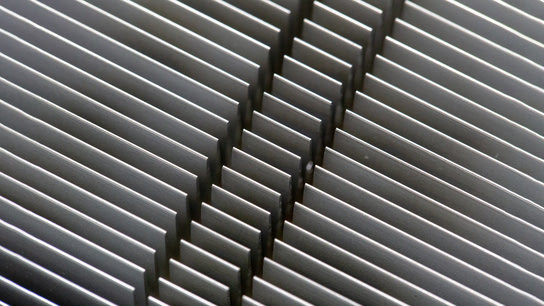I recently bought a Raspberry Pi 4B to use as a small always-on home server. I don’t plan to run it at full throttle all the time, but I still wanted to upgrade it with a heatsink. Its processor comes with a small heat spreader as the board’s only cooling solution. A heatsink is a chunkier block of aluminum than what’s used in the built-in heat spreader, and it has fins that help with heat dissipation. This upgrade should give it a little more headroom before the processor begins throttling performance to keep itself from overheating.
I wanted to find a heatsink that either came with a syringe of thermal adhesive glue or a set of adhesive thermal pads. I browsed for options on AliExpress and found a couple of potential candidates. As per usual, the product description and specifications on AliExpress were incomplete and it was hard to determine which listings fit my requirements. I looked in the review sections to try and determine if any other customers had shared any useful insights.
Among the reviews on several listings, I found lots of confused consumers who’ve bought heatsinks only to realize they didn’t have a way to attach them. Some customers shared “helpful” reviews where they suggested to attach the heatsinks with super glue or double-sided tape. This same idea is also shared on a few blogs and in reviews on other shopping sites. This advice is completely wrong. You should not use super glue or regular tape to attach a heatsink to anything!
I wrote a larger piece about thermal compounds a few weeks back. To reiterate: thermal compounds are used to fill the tiny gaps between the processor’s heat spreader and the heatsink. Thermal compound — whether in the form of a highly conductive paste, adhesive glue, or adhesive pads — is thermally conductive and designed to help improve heat transfers up to temperatures to about 115 ℃. Computer processors generally aim to operate at or just below 100 ℃ to keep them from exceeding the tolerance of its thermal compounds.
Super glue, on the other hand, consists of oils and plastic. It’s heat insulating rather than conductive. It will inhibit instead of aid heat transfer from the processor and into the heatsink. To add insult to injury, it will also make the processor’s tiny heat spreader less effective after you’ve covered it up with an insulator. The exact temperature ranges will vary by brand, but you can expect most super glues to begin melting at or before 80 ℃. Regular double-sided tape has the same problems.
You must either use a thermal adhesive glue or thermal pads with a heat-tolerance of at least 100 ℃ plus some thermal headroom. The thermal adhesive glue will likely do a better than adhesive pads job of filling in the gaps between the heat spreader and heatsink. Thermal pads, on the other hand, are easier to apply and crucially will be much easier to replace later. Intel recommends that you replace thermal compounds every few years.
In larger electronics, there is usually a physical mounting system to press the heatsink firmly against the heat spreader and hold it in place. The tubes/syringes of thermal compound/paste/grease you’ll find in most electronics stores are designed for use with this setup. They’re not adhesive! Make sure you pick one that’s labeled as an adhesive if you want to use a thermally conductive glue instead of thermal pads.
